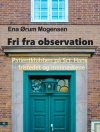In 'The Swastika, the Earliest Known Symbol, and Its Migration, ’ Thomas Wilson embarks on a rigorous historical and cultural exploration of the swastika, tracing its origins and varied uses throughout world history. Wilson employs a meticulous, scholarly style, weaving together extensive archaeological evidence, linguistic analysis, and cross-cultural studies to illuminate the symbol’s complex transformations over time. The work situates the swastika within a broader discourse on symbolism and cultural identity, providing insights into how its meanings have evolved in different contexts, from ancient civilizations to modern societies. Thomas Wilson, an esteemed American archaeologist and curator, held a profound interest in the cultural significance of symbols, which motivated his thorough investigation of the swastika. Living during a time when the symbol had become tainted by its appropriation in the 20th century, Wilson’s endeavor to reclaim its original significance reflects his commitment to understanding the nuances of cultural heritage. His scholarly background in the intersection of ethnology and archaeology empowers him to present a narrative that both respects the symbol’s past and acknowledges its controversial present. This book is highly recommended for readers interested in anthropology, history, and cultural studies. Wilson’s compelling prose and thorough research not only challenge preconceived notions about the swastika but also invite readers to engage thoughtfully with the complexities of symbolism in human civilization.
O autorze
Thomas Wilson (1832–1910) was a distinguished American ethnologist and author, renowned for his extensive research on symbology and ancient artifacts. His scholarly pursuits culminated in a notable work in the area of prehistorical studies, 'The Swastika, the Earliest Known Symbol, and Its Migration’, published in 1896. In this seminal book, Wilson explores the origins, history, and diverse cultural significance of the swastika symbol, tracing its usage from ancient civilizations to contemporary societies, and its migration across various continents. His meticulous approach to the study of the swastika involved cross-cultural surveys and interpretations, which provided a comprehensive view of the symbol’s adoption and evolution throughout human history. Wilson’s literary style is marked by a methodical and empirical approach, which served to lay the foundation for future scholars in the field of symbology and anthropology. As an expert in this niche realm of study, Wilson’s work remains a reference point for those looking to understand the deep historical roots and the complex trajectory of symbols in human cultures. His contributions have not only enriched the scientific community but also provided a greater understanding of the intricate tapestry of human civilization and its shared motifs.












